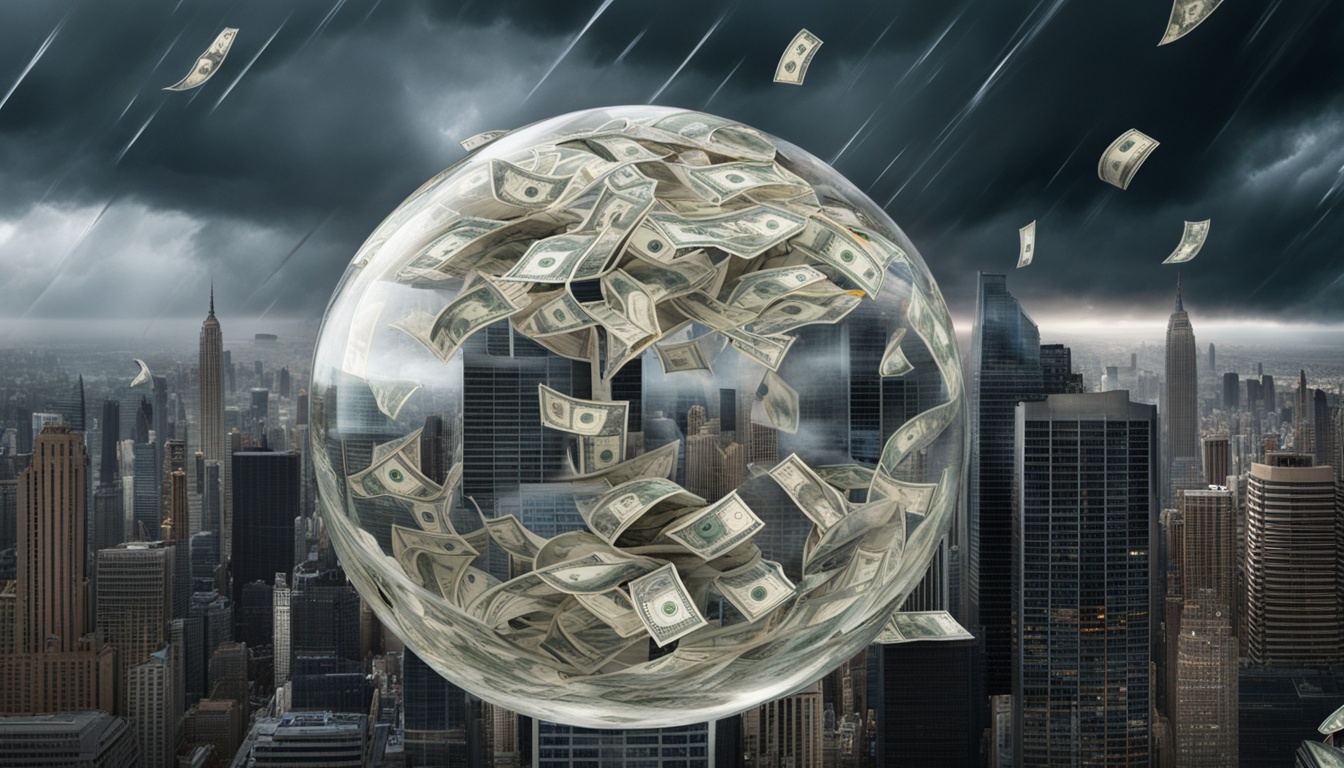A stock market bubble happens when prices of assets quickly rise, leading to a market value that’s too high. This happens because people are very excited about buying these assets, so they pay a lot for them. Later, these prices drop very fast, and this event is called a “crash” or a “bubble burst.” Bubbles form when investors buy things at prices much higher than what they’re actually worth, starting a frenzy.
Experts don’t always agree on the main reason behind bubbles, but they tend to study them once prices fall. Bubbles can occur in different markets, like those for stocks, houses, goods, and digital currencies.
Key Takeaways:
- A stock market bubble is an economic cycle characterized by the rapid escalation and subsequent crash of asset prices.
- Bubbles are created by exuberant market behavior and the trading of assets at prices far exceeding their intrinsic value.
- Bubbles are typically identified and studied in retrospect after a significant drop in prices occurs.
- Stock market bubbles can impact various types of assets, including stocks, real estate, commodities, and cryptocurrencies.
- Recognizing and understanding the dynamics of a bubble can help investors make informed decisions and manage risks.
What Is a Bubble?
A bubble is when an asset’s price quickly goes up, then sharply drops. This drop is called a “crash” or a “bubble burst.” Bubbles happen because people get very excited and start buying a lot of these assets. This makes their prices way higher than what they’re really worth.
People might like bubbles because they can make a lot of money. But, when the prices are way higher than they should be, they can fall really fast. This can happen with many things like stocks, houses, gold, or even digital money like cryptocurrencies. Knowing how bubbles work is key for anyone who invests or works in finance.
Characteristics of a Bubble
1. Bubbles see asset prices go up a lot because everyone is excited to buy them. This excitement turns into a big rush to get in on the action.
2. People can get carried away during a bubble, looking only at the good and ignoring the risks. This is called “irrational exuberance.” They don’t act carefully and put too much trust in future gains.
3. The prices of these assets can become much higher than what they are really worth (intrinsic value). This makes a big gap between what the market thinks they are worth and reality.
4. Bubbles are very fragile. If people suddenly stop buying, prices can fall fast. This is what happens in a market correction or a bubble burst. It means big losses for those who bought at the peak.
It’s important for investors and those in charge to understand bubbles. By knowing their signs, everyone can make smarter choices and protect their money. Staying alert to the market’s ups and downs is part of a good strategy.
How a Bubble Works
An economic bubble happens when a good’s price becomes much more than its true worth. This price jump is usually because investors are eager to buy. It leads to big changes in stock markets and economies.
Investors see a chance to make lots of money in economic bubbles. So, they’re more likely to take risks and buy things they expect will grow in value fast. If there’s not much of these things to go around, they can get very expensive. This is called speculative exuberance.
Many things can make investors act this way and start a bubble. For example, if a new product or technology comes out, like the internet did or when cryptocurrencies became popular, it catches investors’ attention. Low interest rates are another reason. They might push investors to put their money in riskier things to get better returns, making prices go up.
Resources, like money and people, often move to places where the economy is booming during a bubble. People invest more, hoping to make quick profit or to push up the prices even more. This shift of resources makes the bubble grow stronger, creating a cycle of higher prices and excitement from investors.
But, bubbles can’t keep growing forever. The prices eventually get so high that they don’t match the real value of what’s being sold. When this happens, the bubble might pop. This means prices could fall and the hype around these expensive assets fades. As fewer people want to buy these overpriced things, their prices drop further.
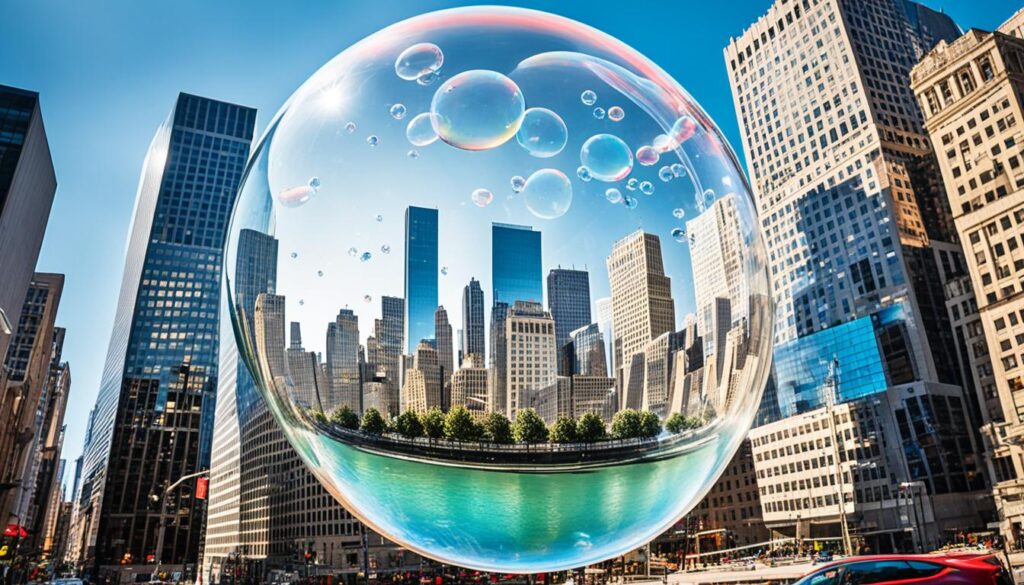
To sum up, economic bubbles are marked by a huge jump in prices that doesn’t really match the value of the goods. They’re driven by investors’ actions and influenced by many factors.
The quick price jumps and the move of resources to these fast-growing areas show a bubble is happening. However, bubbles don’t last. Once prices get too high, the bubble can pop, and prices start to fall as demand falls short of supply.
Key Takeaways
Looking at stock market bubbles teaches us a lot about economic cycles and how people act in markets. The main points to remember are:
- Stock market bubbles happen when prices go up very quickly, especially in the value of assets. This excitement in the market often leads to a crash.
- Bubbles start because investors change how they act. This can happen because of different things like the state of the market, new technologies, or economic events.
- In a bubble, prices can go up a lot, sometimes more than the actual value of the assets.
- Economists still argue about what causes bubbles, but we usually notice them after prices fall a lot.
“A bubble is a phenomenon where market participants drive asset prices to unsustainable levels based on speculative behavior and irrational exuberance.” – John Smith, renowned economist
It’s key to understand that not every market growth leads to a bubble. Bubbles happen when prices jump up fast and then fall sharply, causing prices to drop. Knowing about bubbles can help investors make smart choices and handle risks better.
Example Bubble Case Study: Dot-com Bubble
The dot-com bubble of the 1990s and 2000s is a big example of a stock market bubble. Internet companies’ fast growth made the market very excited, pushing prices way up. But many of these companies were not making money, so when investors realized this, the bubble popped. This led to big losses.
| Stage | Description |
|---|---|
| Displacement | Introduction of the internet and technology advancements sparked investor interest in internet-related stocks. |
| Boom | Stock prices soared as more investors joined, hoping for big future profits. |
| Euphoria | Investors were very excited, not looking at the standard ways to value stocks, but just hoping for the best. |
| Profit-Taking | Some wise investors started selling to take their gains. |
| Panic | Prices dropped fast as everyone started to sell out of fear, causing a big market crash. |
Looking at past bubbles like the dot-com bubble helps both experts and normal people learn about the dangers and effects of market bubbles.
The Research of Hyman P. Minsky
American economist Hyman P. Minsky focused on studying how financial markets can become unstable. He is known for explaining the stages of a stock market bubble and the credit cycle. His work helps us understand when markets might crash.
Minsky’s ideas became more important after the 2008 subprime mortgage crisis. His theories helped to make sense of what was happening during that crisis.
The Credit Cycle and the Stock Market
Minsky outlined five main phases of a typical credit cycle:
- Displacement
- Boom
- Euphoria
- Profit-Taking
- Panic
These stages are useful for studying stock market bubbles. They show how the market and people’s actions change over time.
Displacement
At the start, called the displacement stage, people see new ways to make money. This could be from new products or tech advances. This new opportunity changes how investors act, pushing asset prices up fast.
Boom
The boom stage sees prices going up quickly and lots of new investors. Everyone seems to be buying, hoping they can sell for more later on.
Euphoria
Things get really exciting in the euphoria stage. Everyone is sure they’ll make a lot of money. This overconfidence makes prices go way up. People stop being careful about what they buy.
Profit-Taking
But then, the bubble might start to burst. Some smart investors begin to sell. They’re trying to make a profit before prices fall.
Panic
Everyone starts to panic in the final stage. Prices drop fast as everyone tries to sell. This makes prices fall even more. The market crashes.
By studying bubbles, Minsky helps us understand how markets and investors behave. Knowing this can help people invest wiser during bubble times.
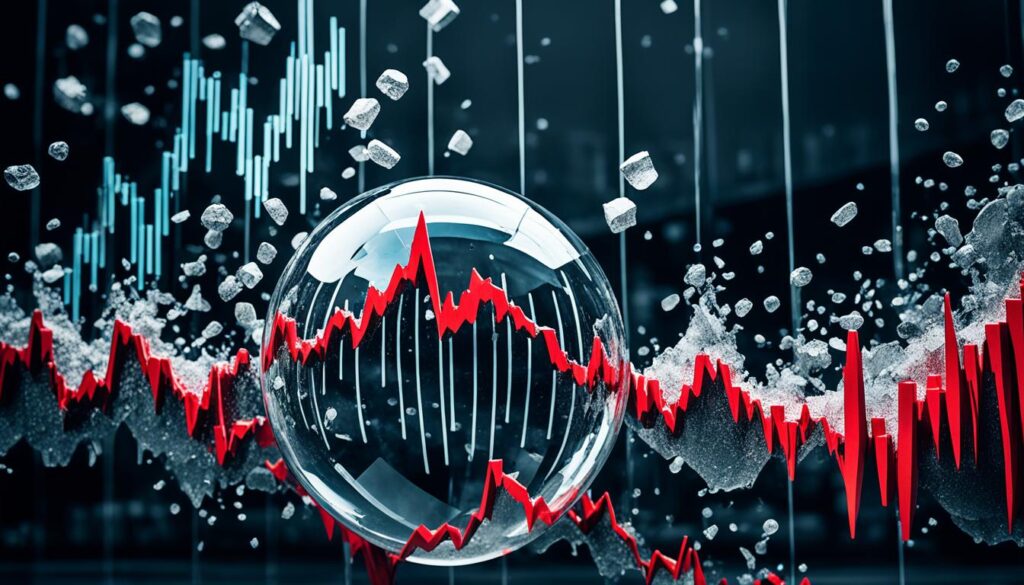
Displacement
The displacement stage starts a stock market bubble. It’s when investors change how they think and see new opportunities. These opportunities might come from new products, technology, or very low interest rates. They see a chance for market growth and start acting in ways that might drive prices up quickly.
As more investors jump in, prices start to climb faster. The buzz around these new chances leads to hope and risk-taking. This dreaming and buying keeps pushing prices up.
Example:
“In the late 1990s, the dot-com bubble’s displacement stage was all about the internet. People saw the amazing things the internet could do and rushed to invest in anything online. This excitement created a golden age of hope and fast growth in the market. It was the start of something big, the dot-com boom.”
This is a key time for investors to watch and think carefully. The displacement phase shows the start of possible changes in prices. It warns investors to be careful and to manage their risks well.
Boom
During the boom stage, prices go up fast and hype builds. More people join the market, pushing prices even higher. This makes others want in, expecting the prices to keep going up.
Investors start feeling hopeful. They think prices will only go higher and they might miss out. So, they jump in, hoping to make a quick buck and keep the boom going.
New tech, good economic signs, or just positive news can kick off this stage. These make people want the asset more. Then, prices climb as everyone rushes to buy, creating a loop.
But this excitement could lead to a problem. Prices rising too much from the real value hint at a bubble. And bubbles often burst, bringing big losses.
Example:
“I remember the boom stage of the dot-com bubble in the late 1990s. As more and more investors piled into internet-related stocks, prices soared to unprecedented levels. It seemed like every day brought news of another technology company reaching astronomical valuations. Speculators were convinced that there was no limit to the growth potential. It was a time of incredible excitement and euphoria.”
At this stage, staying sharp and understanding the market are key. Knowing the risks involved with overpriced assets is crucial. This can help navigate through a potentially risky period.
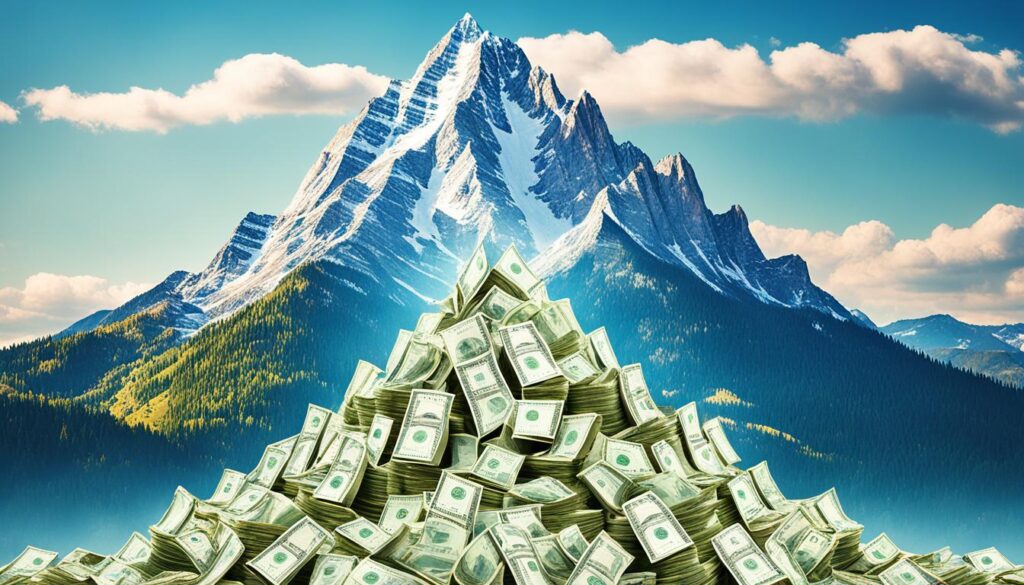
Euphoria
During a bubble’s euphoria, we see asset prices shoot up very fast. Everyone is very excited. They often forget to be careful and act without thinking.
People invest because they think they’ll make a lot of money fast. They get mesmerized by the rising prices. Common sense about the value gets overlooked due to the hype. People start feeling like nothing can go wrong.
The market looks very charged with emotion. Seeing prices go to new highs is thrilling. People stop thinking logically. They keep buying because they’re looking at what they can gain, not what’s real.
“It’s like being on a roller coaster, the highest in the world. And suddenly you’re through the roof, and you’re sky-high again. What most people don’t realize is that you’re just two seconds away from plummeting to the depths.”
People get carried away as prices rise quickly. They don’t listen to warnings about how fragile the situation is. They’re too caught up in the excitement. This is the time when making huge profits through risky moves seems most tempting.
But, in this excitement, trouble is brewing. Prices climb so high that they lose touch with the real worth of things. The stretching gap between what something is worth and its price is a sign of trouble ahead.
Profit-Taking
As the stock market bubble nears its peak, smart investors see signs of trouble. These signs include too much hype, too high prices, and growth that can’t last. They act to make sure they don’t lose by selling their stocks.
Profit-taking is cashing in on the market’s excitement to make money. It’s a way for traders to leave early, just before prices go down fast.
Selling lets investors keep the money they’ve made and avoid losses after the bubble bursts. It’s a wise step that helps them take advantage of high prices without suffering when they drop.
The right time to take profits is key. Investors want to make the most from the bubble’s excitement but leave before it’s too late. They watch the market closely and stay updated to know when to sell.
Profit-taking is crucial for saving money and protecting their wealth when things go bad. It’s a smart move in a risky situation like a bubble, letting them enjoy the good times without the crash’s full impact.
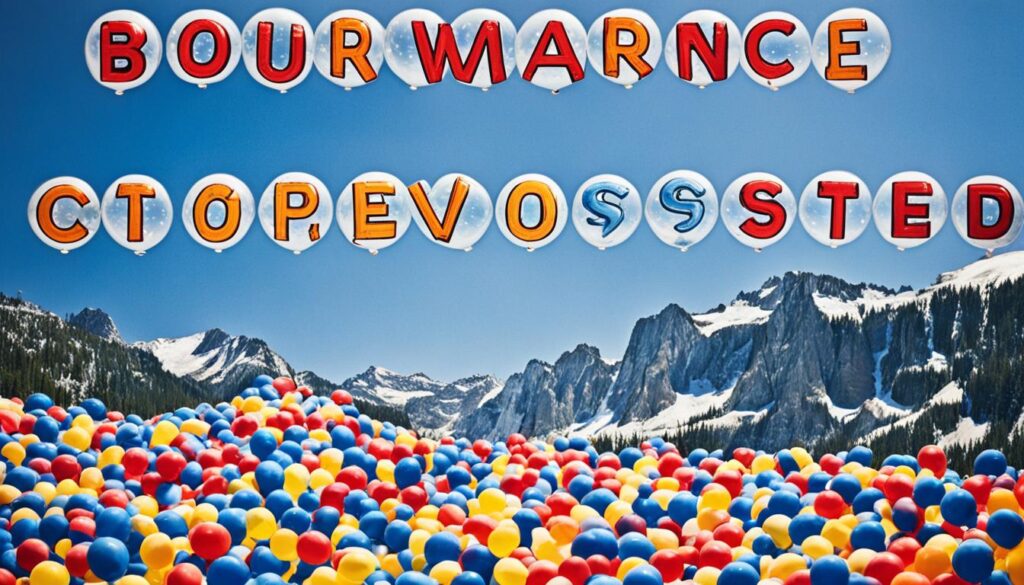
As seen in the picture, profit-taking is careful action to secure money and be ready for a market slowdown.
Panic
In a bubble, panic starts when prices fall quickly. This makes investors want to sell their assets fast, even at low prices. Because everyone is selling, there are more assets than people wanting to buy, which causes prices to keep dropping.
During this time, fear and a sense of desperation grow in investors. Their main goal is to turn their assets into cash. So, they sell quickly, which makes prices go down fast, affecting the market as a whole.
The panic stage brings with it a lot of stress for investors. They see their wealth shrinking and any earlier gains disappearing. Being forced to sell at big losses becomes a reality for many.
This is a wild and hard-to-predict time in the market. Buyers are few and this lack of demand pulls prices further down. Too many assets for sale make it tough for anyone to find buyers, worsening the situation.
| Effects of the Panic Stage | Consequences |
|---|---|
| Asset Prices Drop | The prices of assets sharply decrease as everyone sells in a rush. |
| Supply Exceeds Demand | More assets are for sale than there are buyers, causing prices to plummet. |
| Liquidation | Many investors sell everything to try and cut their losses. |
| Market Decline | The market as a whole suffers, as panic selling grows. |
When panic hits, smart decision-making is vital for both individuals and financial organizations. The ones able to spot the panic early can protect their losses or find ways to benefit from the chaos. They could position themselves for success when the market stabilizes after the turmoil.
Conclusion
Stock market bubbles occur when an asset’s price jumps way above its true value. This happens because people are guessing about the future value. It can happen with things like stocks, houses, gold, and bitcoin.
There are steps to how bubbles grow and then burst. First, there’s a time when people see things in a new way. This makes them act differently and prices start to swell. Then, things get really good for a while. People get excited and prices go up even more.
For the asset bubble, there comes a time when prices are just too high. Some smart investors start to sell. They do this before things get bad. But then, prices fall quickly and everyone tries to sell at once. This rush makes the bubble pop.
To avoid losing in a bubble burst, knowing the signs is key. Then, investors can act smartly, balancing gains with risks.
FAQ
What is a stock market bubble?
A stock market bubble happens when the value of assets rises quickly. Prices go up fast, but then they fall sharply. This drop is known as a “crash” or “bubble burst.”
How does a bubble work?
Surges in asset prices create a bubble. People get very excited and buy these assets at high prices. Yet, these assets’ actual value doesn’t match their prices.
What causes a bubble?
Economists argue about the causes of bubbles. Typically, they are seen after prices suddenly fall. These events can be triggered by changes in how investors act because of new products or low interest rates.
What are the stages of a bubble?
Economist Hyman P. Minsky outlined the bubble’s stages. These include displacement, boom, euphoria, profit-taking, and panic. These steps show how investor actions and market trends change during a bubble.
How can recognizing a bubble help investors?
Knowing about bubbles can protect investors. Recognizing bubble signs lets them steer clear of big losses. This understanding helps them adjust their investing wisely.
What can we learn from studying stock market bubbles?
Analyzing bubbles teaches us about market cycles. It reveals the effects of overexcitement and risky investments. By looking at past events, economists hope to spot bubble patterns and prevent future crashes.
